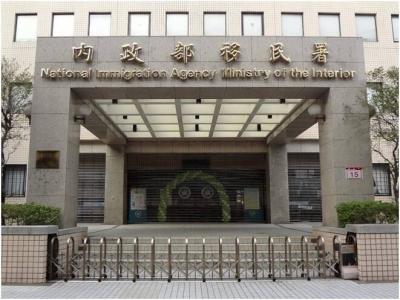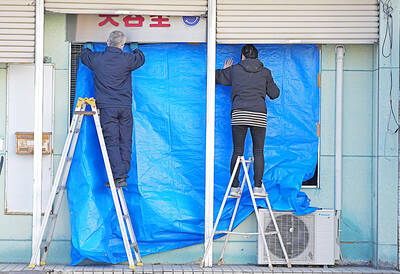The National Communications Commission (NCC) yesterday said that Aerkomm Inc needs to register as a telecom service provider if it wants to provide a low-Earth-orbit satellite service in Taiwan, as well as comply with national laws on applying for a frequency spectrum and managing foreign investors.
The Nevada-based company, which recently announced that it had chosen Taiwan as a research and development and service base in the Asia-Pacific region, filed an application to offer a low-Earth-orbit satellite service in Taiwan — which some call a “6G service.”
The service would transmit data faster than 5G service and greatly facilitate communication for residents of remote areas and frequent air travelers, the company said, adding that the travelers would not need international roaming services when overseas.
While confirming that the commission had received Aerkomm’s application, NCC Vice Chairman Wong Po-tsung (翁柏宗) said that the firm should first register as a telecom service provider, as required by the Telecommunication Management Act (電信管理法), which took effect on July 1.
“So far, its business plan is vague, and we are not sure if it needs to secure a landing right for its service here. But if it does, we need to review several factors, including the percentage of its shares owned by foreign investors and whether the frequency spectrum that the company intends to use to build its service network is being used by others or might cause interference on surrounding networks,” Wong said.
The company would have to build satellite ground stations so that the commission could ensure that network operations were not exploited by criminals, and apply to use a frequency spectrum and explain how they would use it to construct their satellite service network,” he said.
A more detailed business plan should be presented to the commissioners, Wong said, adding that the NCC would consider how the service is used in other countries.
“Satellite communications is more common in countries with large territories, where there remain many remote townships not covered by telecom service networks, but in Taiwan, the 4G service coverage rate has reached 95 percent,” he said, adding that the company’s initial plan is to facilitate communication for fisheries.
Wong reiterated that the company needs to comply with national laws regarding securing a frequency spectrum and the management of foreign investors.
The commission would consider whether the company’s use of the frequency spectrum concurs with the Ministry of Transportation and Communications’ spectrum distribution plan, Wong said.

A small number of Taiwanese this year lost their citizenship rights after traveling in China and obtaining a one-time Chinese passport to cross the border into Russia, a source said today. The people signed up through Chinese travel agencies for tours of neighboring Russia with companies claiming they could obtain Russian visas and fast-track border clearance, the source said on condition of anonymity. The travelers were actually issued one-time-use Chinese passports, they said. Taiwanese are prohibited from holding a Chinese passport or household registration. If found to have a Chinese ID, they may lose their resident status under Article 9-1

Taiwanese were praised for their composure after a video filmed by Taiwanese tourists capturing the moment a magnitude 7.5 earthquake struck Japan’s Aomori Prefecture went viral on social media. The video shows a hotel room shaking violently amid Monday’s quake, with objects falling to the ground. Two Taiwanese began filming with their mobile phones, while two others held the sides of a TV to prevent it from falling. When the shaking stopped, the pair calmly took down the TV and laid it flat on a tatami mat, the video shows. The video also captured the group talking about the safety of their companions bathing

PROBLEMATIC APP: Citing more than 1,000 fraud cases, the government is taking the app down for a year, but opposition voices are calling it censorship Chinese Nationalist Party (KMT) Chairwoman Cheng Li-wun (鄭麗文) yesterday decried a government plan to suspend access to Chinese social media platform Xiaohongshu (小紅書) for one year as censorship, while the Presidential Office backed the plan. The Ministry of the Interior on Thursday cited security risks and accusations that the Instagram-like app, known as Rednote in English, had figured in more than 1,700 fraud cases since last year. The company, which has about 3 million users in Taiwan, has not yet responded to requests for comment. “Many people online are already asking ‘How to climb over the firewall to access Xiaohongshu,’” Cheng posted on

A classified Pentagon-produced, multiyear assessment — the Overmatch brief — highlighted unreported Chinese capabilities to destroy US military assets and identified US supply chain choke points, painting a disturbing picture of waning US military might, a New York Times editorial published on Monday said. US Secretary of Defense Pete Hegseth’s comments in November last year that “we lose every time” in Pentagon-conducted war games pitting the US against China further highlighted the uncertainty about the US’ capability to intervene in the event of a Chinese invasion of Taiwan. “It shows the Pentagon’s overreliance on expensive, vulnerable weapons as adversaries field cheap, technologically